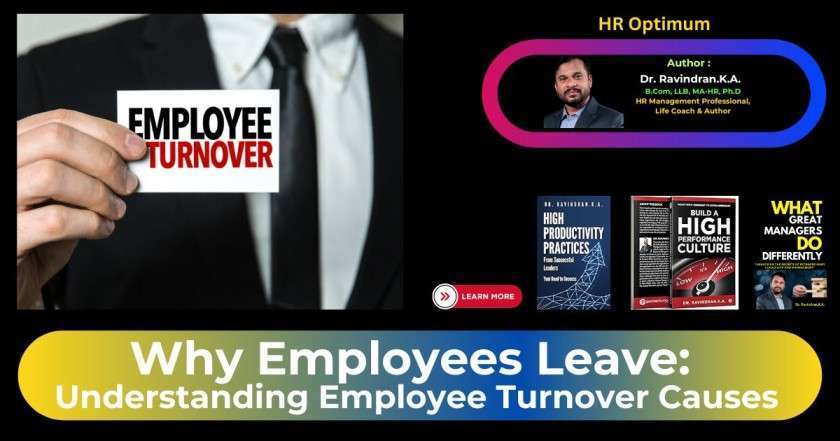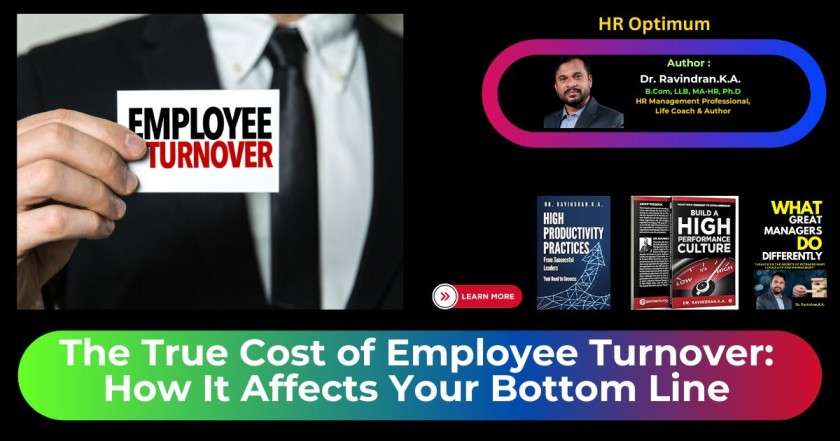Are your company’s employee turnover rates on par with the industry average? It’s key to know how your team compares to others. This knowledge helps spot areas to improve and craft better strategies to keep your team. In today’s job market, managing employee turnover well is crucial for a stable, engaged workforce and long-term success.
Thank you for reading this post, don't forget to subscribe!
Key Takeaways
- The average turnover rate for UK workers is 34% (India 18%), with 27.4% moving to new employers and 6.6% not working one year later.
- Employee turnover rates vary significantly by industry, ranging from 25% in public administration to 52% in hospitality.
- Analyzing your industry’s turnover trends is essential for crafting effective retention strategies and managing talent effectively.
- High turnover can result in substantial direct and indirect costs, including recruitment, training, and lost productivity.
- Benchmarking your organization’s turnover against industry standards can provide valuable insights to improve employee engagement and reduce unwanted attrition.
Understanding Employee Turnover and Its Impact
It’s key to keep an eye on employee turnover rates to understand how they affect a business. The CIPD’s Resourcing and Talent Planning Report 2022 showed that only 17% of companies know the cost of losing staff. And just 12% use data to improve retention strategies.
Why Measuring Turnover is Crucial
Knowing the costs of hiring, training, and lost productivity helps companies see the real effect of high turnover. This knowledge helps them invest in retention strategies. By understanding the full cost of losing staff, companies can work on making a better workplace culture and employee engagement.
Direct and Indirect Costs of High Turnover
High employee turnover brings many costs, both direct and indirect. Direct costs are things like hiring and training new staff. Indirect costs, like lost productivity and lower morale, can really hurt a company’s profits.
A study by the Society for Human Resource Management (SHRM) showed that losing an employee costs about six to nine months of their salary. This highlights why good retention strategies and a positive workplace are key to lowering employee turnover rates.
| Direct Costs | Indirect Costs |
|---|---|
| Recruitment and advertising | Lost productivity |
| Interviewing and hiring | Decreased employee morale |
| Onboarding and training | Loss of institutional knowledge |
| Severance and exit payments | Potential impact on customer satisfaction |
“Understanding the true cost of employee turnover is crucial for businesses to make informed decisions and invest in effective retention strategies.”
By understanding the effects of employee turnover, companies can see the value in investing in career development, succession planning, and other efforts. These initiatives help with employee engagement and a positive workplace culture.
Employee Turnover Rates by Industry
Employee turnover rates vary a lot across different industries in India. It’s important for companies to know these trends. This helps them see how they stack up and plan better to keep their employees.
Turnover and Tenure Trends Across Sectors
The hospitality industry has the highest turnover rate at 82% in 2023, down from 131% in 2020. On the other hand, the government sector has the lowest rate at 18% in 2023. A big part of hospitality workers has been in their jobs for less than a year. In contrast, jobs in financial activities have an average tenure of 4.3 years.
| Industry | Turnover Rate 2023 | Turnover Rate 2022 | Turnover Rate 2021 | Turnover Rate 2020 |
|---|---|---|---|---|
| Construction | 54% | 53% | 57% | 63% |
| Manufacturing | 37% | 39% | 40% | 44% |
| Trade, Transportation, and Utilities | 49% | 54% | 55% | 61% |
| Information | 32% | 37% | 39% | 45% |
| Financial Activities | 29% | 29% | 29% | 31% |
| Professional & Business Services | 57% | 63% | 64% | 69% |
| Education & Health Services | 39% | 38% | 37% | 45% |
| Leisure & Hospitality | 79% | 82% | 85% | 131% |
| Government | 18% | 20% | 18% | 24% |
These trends show the importance of having specific employee retention strategies. They also highlight the need for good compensation and benefits and a positive organizational culture. This helps address the unique workforce analytics and job satisfaction challenges each industry faces.
Employee Turnover Rates
Knowing how often employees leave is key for any company wanting to keep its best people. In India, the average rate is about 15%. But this can change a lot based on the job and industry. A high rate might mean unhappy workers, while a low rate could mean a lack of new ideas.
To figure out turnover rates, you need to know how many left, the total number of employees, and the time frame. The formula is [(number of employees who left/average number of employees) * 100]. This gives you a clear percentage to compare with others in your field.
Seeing how your rate stacks up against others can give you important clues. For instance, LinkedIn shows that the professional services sector has the highest rate at 13.4%. Tech is close behind at 12.9%, followed by entertainment and hospitality at 11.8%, and retail at 11.4%.
| Industry | Turnover Rate |
|---|---|
| Professional Services | 13.4% |
| Technology | 12.9% |
| Entertainment | 11.8% |
| Hospitality | 11.8% |
| Retail | 11.4% |
Understanding your company’s turnover rate and how it matches up with others can help you see where to improve. You can work on keeping employees happy and managing talent better. This can make your workforce more stable and help your business do better.
“Measuring and understanding employee turnover is crucial for organizations to assess the effectiveness of their talent management strategies and identify areas for improvement.”
Factors Influencing Recent Turnover Trends
Employee turnover has changed a lot lately, thanks to many factors. Remote and hybrid work, more job changes, and economic worries have all played a part. These changes have shaped how people move between jobs.
Remote and Hybrid Work Challenges
Remote and hybrid work have given employees more flexibility, making life easier. But they’ve also brought some problems. Some feel remote work means they miss out on promotions because they’re not in the office.
This has made some look for new jobs where they can grow their careers fairly.
Cross-Industry Mobility and Labor Shortages
There’s a big demand for skilled workers in many fields, especially in healthcare and education. This has made it easier for people to switch jobs. They’re looking for better pay, work-life balance, and chances to learn and grow.
Economic Concerns and Better Pay Motivations
Workers are also moving for economic reasons. They worry about the future job market and want higher pay to keep up with inflation. The search for better pay and benefits is a big reason for leaving a job.
| Sector | Turnover Trends | Factors Driving Turnover |
|---|---|---|
| Healthcare | Higher turnover rates | Burnout, search for better opportunities |
| Finance | Stable turnover rates | Strong employee engagement policies, job security |
| Education | Higher turnover rates | Burnout, search for better opportunities |
| Retail | Higher turnover rates | Burnout, search for better opportunities |
| Technology | Higher turnover rates | Burnout, search for better opportunities |
The table shows how different industries are seeing changes in turnover. Burnout, the search for better jobs, and remote work are some reasons behind these changes.
As the job world keeps changing, knowing what affects turnover is key. It helps companies keep their teams happy and stable.
Conclusion
It’s key for Indian companies to check their employee turnover rates against the industry average. They need to know what makes people leave. This helps them manage their talent better and cut down on turnover.
By looking at both direct and indirect costs of losing employees, companies can make plans to keep their workers. This includes making the workplace better and keeping the skilled people they need to succeed.
To lower high employee turnover, companies must do several things. They should focus on hiring, keeping, and engaging their staff well. This means making the workplace supportive and inclusive, offering good pay and benefits, and helping employees grow in their careers.
Reviewing and updating these efforts regularly is important. This keeps companies ready for changes in the job market and keeps their workers happy and involved.
As India’s economy changes, managing employee turnover will be key to a company’s success. By tackling the main reasons people leave and having strong plans to keep them, companies can stay ahead. This helps them keep their edge in their fields.
FAQ
What is the average employee turnover rate in the UK?
In the UK, the average worker leaves their job at a rate of 34%. This means 27.4% switch to a new employer and 6.6% stop working within a year.
How do employee turnover rates vary across industries in the UK?
Turnover rates differ a lot across UK industries. For example, it’s 25% in public administration and defence, but 52% in hospitality.
Why is it important for organizations to track employee turnover and its costs?
It’s key for businesses to keep an eye on employee turnover and its effects. This helps spot trends and keeps employees happy. Yet, only 17% of companies know the cost of losing staff, and just 12% use data to improve keeping staff.
How do employee turnover and tenure rates differ across industries in India?
In India, turnover and tenure rates change a lot by industry. Hospitality has the highest turnover at 52%, while public administration and defence have the lowest at 25%. Over a third of those in hospitality have been in their job less than a year, but other sectors have more stable jobs.
What is the average employee turnover rate in India?
India’s average employee turnover is about 15%. But it can change a lot based on the industry and job type.
What are some of the factors contributing to recent shifts in employee turnover trends?
Recent changes in turnover are due to more remote and hybrid work, easier job changes, and economic worries. Remote work has been good for many but has also caused issues like unfair pay and promotions. The high demand for workers has made it easier to switch jobs, especially in sectors like healthcare and education where people are very tired. Economic worries and the need for higher pay to keep up with inflation are also pushing people to look for new jobs.
 hroptimum
hroptimum






